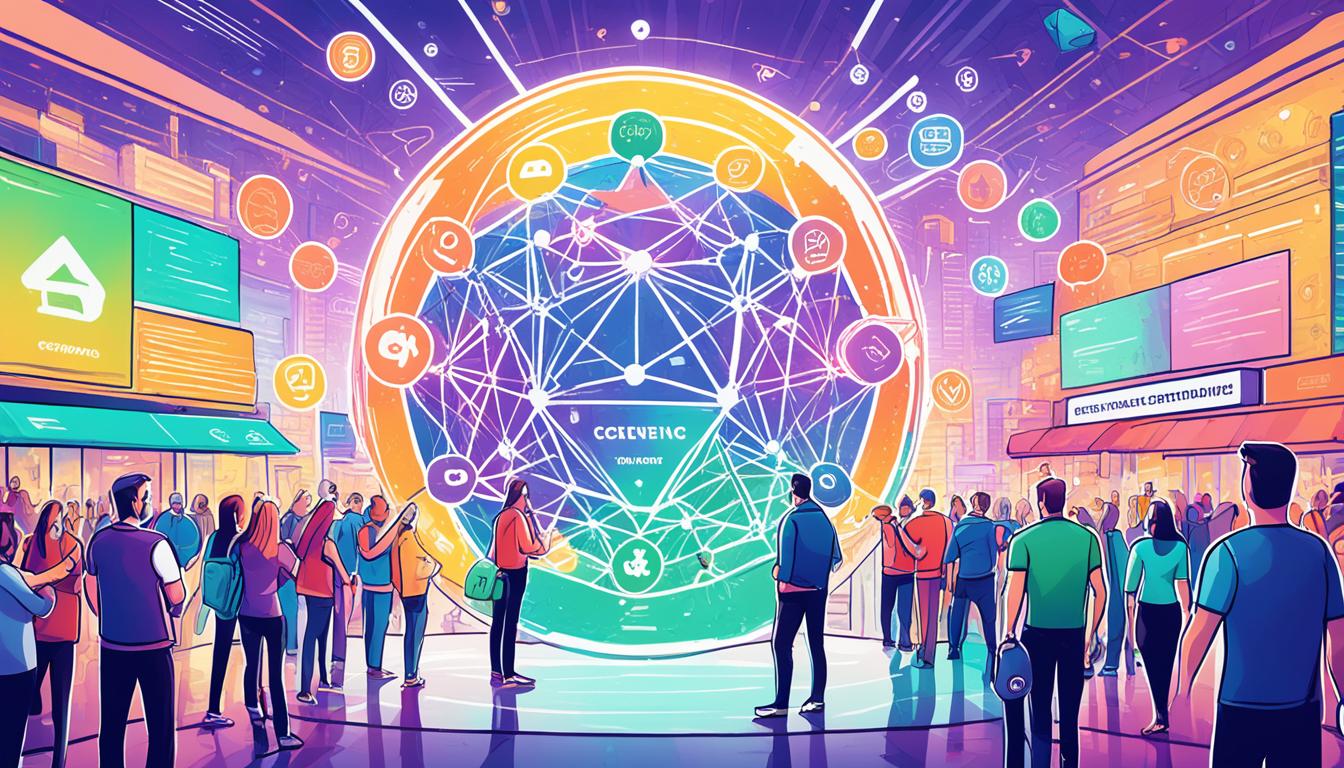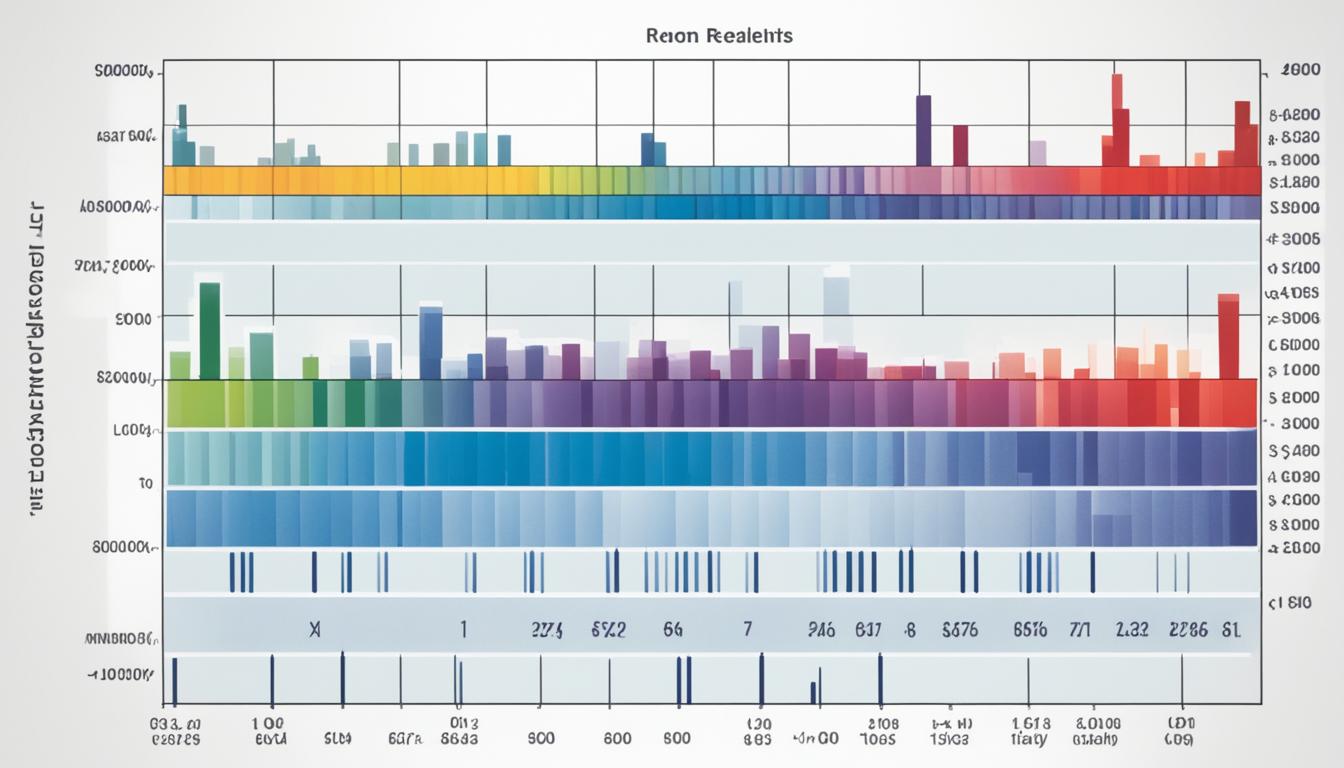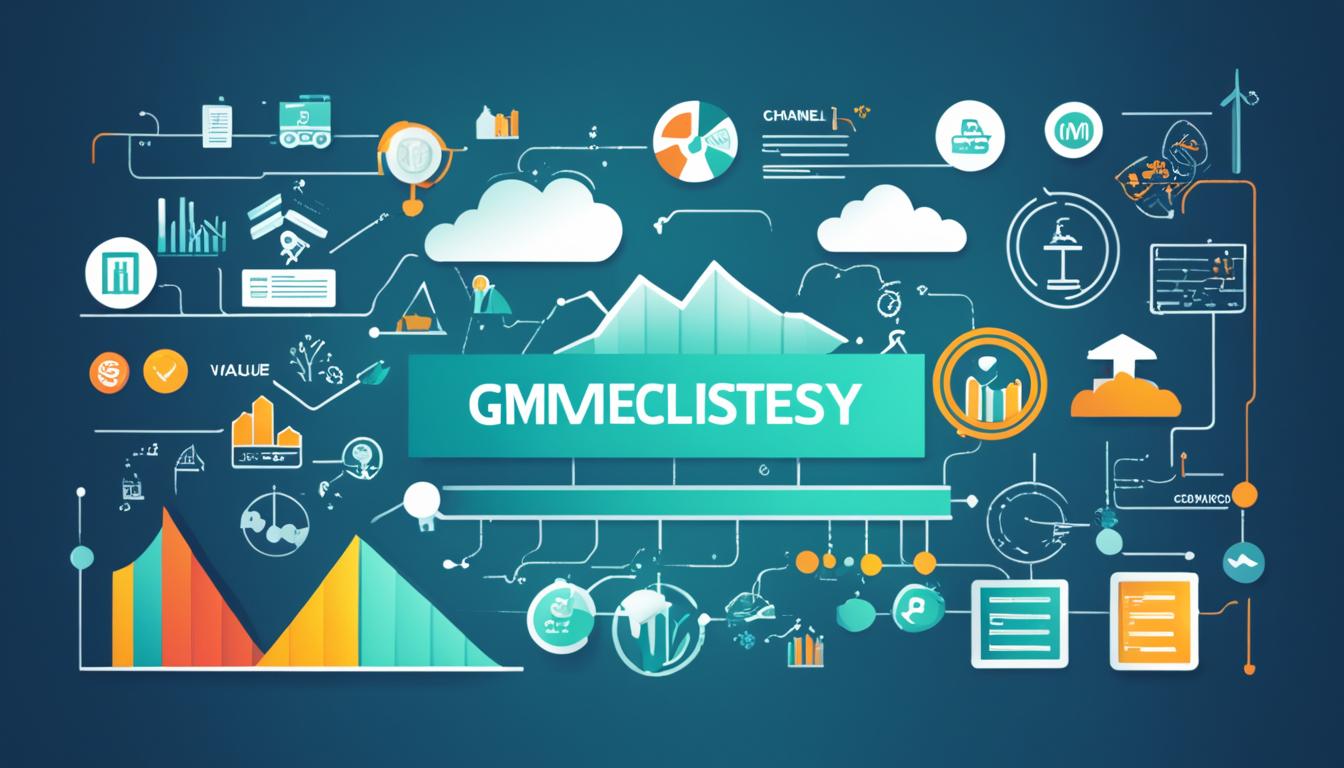An avatar in marketing refers to a representation of your ideal customer. It is a detailed profile that helps marketers understand the characteristics, needs, and preferences of their target audience. This concept is highly effective in creating targeted marketing strategies.
Key Takeaways:
- An avatar in marketing is a detailed profile of your ideal customer.
- It helps marketers understand the characteristics, needs, and preferences of their target audience.
- Creating an avatar is crucial for developing targeted marketing strategies.
- Understanding your ideal customer enables you to tailor your messaging and strategies effectively.
- Avatars provide insights into the wants, needs, and pain points of customers.
The Importance of Customer Avatars in Marketing
Customer avatars are invaluable tools for businesses as they enable them to identify and understand their target audience. By creating a detailed profile of their ideal customer, marketers gain deep insights into the wants, needs, and pain points of their customers. This understanding is the foundation for developing products, content, and marketing campaigns that resonate with their audience and drive successful results.
Customer avatars, also known as target audience avatars or customer personas in marketing, provide a comprehensive view of a business’s perfect customer. They go beyond simple demographics and delve into the motivations, aspirations, and challenges that drive customer behavior. With this information, businesses can tailor their messaging and strategies to effectively reach and connect with their target audience.
When businesses craft their marketing efforts with customer avatars in mind, they can speak directly to the specific needs and desires of their ideal customers. By addressing their pain points and offering tailored solutions, businesses can establish a strong connection and build trust with their audience.
For example, a customer avatar could reveal that price is a major concern for the ideal customer. Armed with this insight, a business can emphasize affordability and value in their marketing messaging, attracting customers who prioritize cost-effectiveness.
The Benefits of Customer Avatars
- Develop tailored marketing strategies that resonate with the target audience
- Gain insights into customer wants, needs, and pain points
- Create relevant and engaging content that connects with the audience
- Optimize paid advertising strategies by targeting the right audience
Customer avatars are crucial for driving marketing success by helping businesses understand their audience at a deeper level. By leveraging this knowledge, businesses can create personalized experiences and build meaningful connections with their customers.
| Benefit | Description |
|---|---|
| Tailored Marketing Strategies | Create marketing campaigns that resonate with the target audience |
| Insights into Customer Needs | Understand customer wants, needs, and pain points |
| Engaging Content | Create relevant and compelling content that connects with the audience |
| Optimized Advertising | Target the right audience for paid advertising strategies |
Benefits of Creating a Customer Avatar
Creating a customer avatar offers numerous benefits for businesses. It allows them to fully understand their ideal customer profile, enabling more effective sales and marketing efforts. By developing a buyer persona in marketing, businesses can personalize user experiences, create relevant content, optimize email marketing campaigns, and improve paid advertising strategies. Understanding the characteristics and preferences of an ideal customer enables businesses to attract and retain customers who align with their brand and offerings.
Benefits of Creating a Customer Avatar
- Personalize user experiences
- Develop better products
- Create relevant content
- Optimize email marketing campaigns
- Improve paid advertising strategies
Creating a detailed ideal customer profile helps businesses tailor their marketing efforts to meet the specific needs and interests of their target audience. With a buyer persona in marketing, businesses can focus their resources on attracting and retaining customers who are most likely to engage, convert, and become loyal brand advocates.
| Benefits | Explanation |
|---|---|
| Personalize user experiences | By understanding the preferences and pain points of their ideal customers, businesses can tailor their products, services, and customer interactions to create personalized experiences that resonate with their audience. |
| Develop better products | A comprehensive understanding of the ideal customer profile allows businesses to identify gaps in the market and develop products that meet the specific needs and preferences of their target audience. This leads to higher customer satisfaction and increased sales. |
| Create relevant content | With a clear understanding of the target audience’s interests, challenges, and aspirations, businesses can create content that addresses their needs and provides valuable solutions. Relevant content attracts and engages the right customers, enhancing brand credibility and driving conversions. |
| Optimize email marketing campaigns | By segmenting their email lists based on the ideal customer profile, businesses can send targeted and personalized messages that are more likely to resonate with recipients. This increases open rates, click-through rates, and ultimately, conversions. |
| Improve paid advertising strategies | Understanding the characteristics of the ideal customer allows businesses to optimize their paid advertising efforts. By targeting the right audience with compelling and relevant ads, businesses can increase their return on investment (ROI) and achieve higher conversion rates. |
Investing time and resources into creating an ideal customer profile and buyer persona in marketing leads to more effective marketing strategies, increased customer satisfaction, and better business outcomes.
Steps to Create a Customer Avatar
Creating a customer avatar in marketing involves a series of important steps. By thoroughly researching and collecting relevant data, businesses can develop a detailed profile of their ideal customer. This information serves as a foundation for crafting effective marketing strategies and targeted messaging that resonates with the target audience.
Gathering Information
The first step in avatar creation is gathering information from various sources. This includes:
- Existing customers: Analyzing data and feedback from current customers can provide valuable insights into their demographics, preferences, and behaviors.
- Surveys or interviews: Conducting surveys or interviews with target customers allows businesses to gather firsthand information, uncover their needs, pain points, and motivations.
- Market research: Analyzing market trends, competitor analysis, and industry reports can help identify broader market patterns and customer preferences.
Outline the Avatar
Once the necessary data is collected, businesses can create a comprehensive outline of the customer avatar. This involves identifying key demographics, goals, values, resources, challenges, and objections of the ideal customer. Naming and visualizing the avatar can help businesses better understand and connect with their target audience.
Example of a Customer Avatar Outline
The following table showcases an example outline of a customer avatar for a fitness apparel brand:
| Demographics | Goals | Values | Resources | Challenges | Objections |
|---|---|---|---|---|---|
| Female, aged 25-35 | Lead an active and healthy lifestyle | Sustainability, empowerment, and inclusivity | Monthly gym membership, fitness tracker | Maintaining motivation, finding time for workouts | Concerns about the price and quality of products |
This example demonstrates how businesses can outline their customer avatar, taking into account important aspects such as demographics, goals, values, resources, challenges, and objections. Understanding these details helps businesses tailor their marketing efforts to effectively meet the needs and preferences of their ideal customer.
Understanding the Avatar Discovery Process
Discovering a customer avatar involves two main processes. If a business has been operating for a few years, they may already have real customers who fit the avatar description. In this case, businesses can use their existing customers as a reference to create an ideal customer profile. Alternatively, businesses can create an avatar based on their desired customer characteristics, focusing on the traits that align with their business goals and values.
Using existing customers as a reference for creating an ideal customer profile provides valuable insights into the preferences, behaviors, and needs of the target audience. By analyzing the characteristics and behavior patterns of these real customers, businesses can develop a thorough understanding of their target market and create a customer avatar that accurately represents the ideal customer.
On the other hand, businesses can also create an avatar based on their desired customer characteristics. This approach allows them to envision the type of customer they want to attract and analyze the traits that align with their business goals and values. By defining the desired characteristics of their ideal customer, businesses can shape their marketing strategies and messaging to effectively reach and engage with the target audience.
Whether using real customers as a reference or creating an avatar based on desired characteristics, the key is to focus on understanding and connecting with the target audience. This involves gathering data, conducting market research, and analyzing customer insights to paint a detailed picture of the ideal customer. With a well-defined avatar, businesses can tailor their marketing efforts to effectively reach their target audience and drive meaningful engagement and conversions.
The Impact of Focusing on Ideal Customers
Focusing on ideal customers is a key strategy that can have a significant impact on the success of a business. By identifying and targeting customers who align with their offerings, businesses can save time and resources while maximizing their return on investment.
When businesses focus on their ideal customers, they can tailor their marketing efforts to meet the specific needs and preferences of this target audience. This personalized approach allows businesses to create campaigns that are more likely to resonate with their ideal customers, increasing the chances of engagement and conversion.
One of the main benefits of focusing on ideal customers is their loyalty. Ideal customers are more likely to make repeat purchases, becoming long-term patrons of the business. Moreover, satisfied ideal customers often recommend the business to others, acting as advocates and bringing in new customers through word-of-mouth referrals.
In addition to loyalty and referrals, ideal customers also contribute to the growth and success of a business in other ways. They provide feedback and insights that can help improve products and services, contribute to market research studies, and even participate in case studies or testimonials. This valuable input assists businesses in refining their offerings to better meet the needs of their ideal customers and attract similar customers in the future.
By focusing on ideal customers, businesses can establish a strong brand identity and reputation. When a business consistently delivers value to its ideal customers, it becomes associated with quality and reliability. This positive association builds trust and credibility with the target audience, attracting more ideal customers and increasing the business’s market share.
In conclusion, focusing on ideal customers is a strategic approach that can yield significant benefits for businesses. By tailoring marketing efforts to reach and engage these ideal customers, businesses can save resources, build customer loyalty, and establish a strong market presence. Understanding the impact of focusing on ideal customers and implementing targeted strategies is crucial in today’s competitive business landscape.
The Role of Avatars in Targeted Marketing
Avatars play a crucial role in targeted marketing strategies. By understanding the characteristics and preferences of their ideal customers, businesses can create personalized marketing campaigns that resonate with their audience.
When businesses develop customer avatars, they gain valuable insights into their target audience’s demographics, behaviors, and motivations. This helps them tailor their messaging and content to effectively connect with their ideal customers.
Avatars also assist businesses in identifying the most effective platforms, messaging, and advertising channels to reach their target audience. By understanding the preferred communication channels and content consumption habits of their avatars, businesses can optimize their marketing efforts for maximum impact.
Benefits of Avatars in Targeted Marketing:
- Higher engagement: Targeted marketing based on customer avatars leads to higher engagement rates as the messaging resonates with the audience’s specific needs and preferences.
- Improved conversion rates: By crafting personalized marketing campaigns, businesses increase their chances of converting leads into loyal customers.
- Enhanced overall marketing success: By focusing their efforts on the most relevant audience segments, businesses can achieve greater marketing success with limited resources.
| Marketing Approach | Engagement Rate | Conversion Rate |
|---|---|---|
| Generalized Marketing | 5% | 3% |
| Targeted Marketing with Avatars | 15% | 10% |
As illustrated in the table above, targeted marketing with avatars can significantly impact both engagement and conversion rates. Businesses can achieve three times higher engagement and more than triple their conversion rates by tailoring their marketing efforts based on customer avatars.
In conclusion, avatars are an essential tool for targeted marketing. They enable businesses to understand their ideal customers and develop personalized marketing strategies that resonate with their audience. By leveraging customer avatars, businesses can optimize their marketing efforts, increase engagement and conversion rates, and ultimately achieve greater marketing success.
Examples of Customer Avatars
Customer avatars serve as invaluable tools for businesses in understanding and connecting with their target audience. Depending on the type of business and the specific target audience, customer avatars can vary significantly in their characteristics and preferences. Let’s explore an example of how a business coach might create an avatar to better illustrate this concept.
Example: Business Coach Avatar
A business coach wants to create an avatar to represent their ideal customer. In this case, they decide to name the avatar Jordan. Here is a detailed profile of Jordan:
| Avatar Profile | Details |
|---|---|
| Gender | Female |
| Age | Forties |
| Occupation | Independent consultant |
| Income | $100,000 to $400,000 per year |
| Goal | Seeking more impact and influence in her work |
By creating this detailed avatar profile, the business coach can better understand the specific needs, desires, and pain points of their ideal customer, Jordan. With this knowledge, they can tailor their offerings and marketing strategies to resonate with Jordan, addressing her unique challenges and aspirations.
Using the avatar profile as a guide, the business coach can create content, products, and services that are specifically designed to meet Jordan’s needs. By aligning their offerings with the preferences of their ideal customer, the business coach can attract and retain more clients who share similar characteristics to Jordan.
This example highlights the importance of customer avatars in marketing. By understanding the specific characteristics and preferences of their ideal customers, businesses can effectively tailor their strategies to connect with their target audience and drive success.
Conclusion
Customer avatars are a powerful tool in marketing that allows businesses to understand and connect with their target audience. By creating detailed profiles of their ideal customers, businesses can develop personalized marketing strategies that resonate with their audience, leading to increased engagement, conversions, and business success.
Avatars provide valuable insights into the characteristics, needs, and preferences of customers, enabling businesses to tailor their messaging and strategies accordingly. Understanding the importance of avatars and following the steps to create them can significantly enhance a business’s marketing efforts, resulting in more effective sales and marketing campaigns.
By focusing on ideal customers, businesses can save time and resources while maximizing their return on investment. Ideal customers tend to make repeat purchases, refer others to the business, and contribute to its growth and success. Targeted marketing based on customer avatars leads to higher engagement, conversion rates, and overall marketing success.







